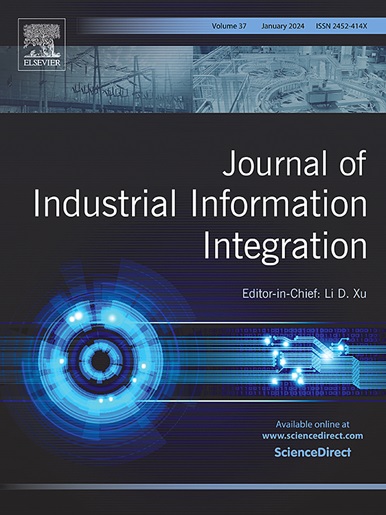Backpropagation neural network model with statistical inference in manufacturing processes
IF 10.4
1区 计算机科学
Q1 COMPUTER SCIENCE, INTERDISCIPLINARY APPLICATIONS
引用次数: 0
Abstract
Nowadays, there is a growing need for tools to model the complex characteristics of manufacturing processes to support decision-making and optimize production and quality. This study proposes using a Backpropagation neural network (BPNN) to model manufacturing processes, leveraging its ability to capture complex and nonlinear relationships. Additionally, integrating statistical inference techniques from Generalized Linear Models (GLM) with the neural network is suggested. This integration combines the predictive capabilities of the BPNN with the statistical tools of GLMs, enhancing result interpretability and analysis accuracy. The proposed approach was applied to two manufacturing processes. In the die-casting process, the BPNN with a logit function showed a lower deviance (0.0399) compared to the probit model (0.0875) and a greater deviance difference (6.1280) with a p-value of 0.0201. Confidence intervals confirmed the significance of these results. Metal temperature and solidification time were significant predictors, with weights of -1.0375 and -0.9880, respectively. In the machining process, the BPNN model with the probit function had a lower deviance (0.0140) compared to the logit model (0.0175) and a slight precision advantage with a deviance difference of 3.9325 and a p-value of 0.0473. Parameters S1 and S2 had significant effects with weights of 72.671 and -54.397, respectively. This approach allows for selecting optimal activation functions for each process, improving efficiency and quality control in manufacturing.
求助全文
约1分钟内获得全文
求助全文
来源期刊

Journal of Industrial Information Integration
Decision Sciences-Information Systems and Management
CiteScore
22.30
自引率
13.40%
发文量
100
期刊介绍:
The Journal of Industrial Information Integration focuses on the industry's transition towards industrial integration and informatization, covering not only hardware and software but also information integration. It serves as a platform for promoting advances in industrial information integration, addressing challenges, issues, and solutions in an interdisciplinary forum for researchers, practitioners, and policy makers.
The Journal of Industrial Information Integration welcomes papers on foundational, technical, and practical aspects of industrial information integration, emphasizing the complex and cross-disciplinary topics that arise in industrial integration. Techniques from mathematical science, computer science, computer engineering, electrical and electronic engineering, manufacturing engineering, and engineering management are crucial in this context.
 求助内容:
求助内容: 应助结果提醒方式:
应助结果提醒方式:


